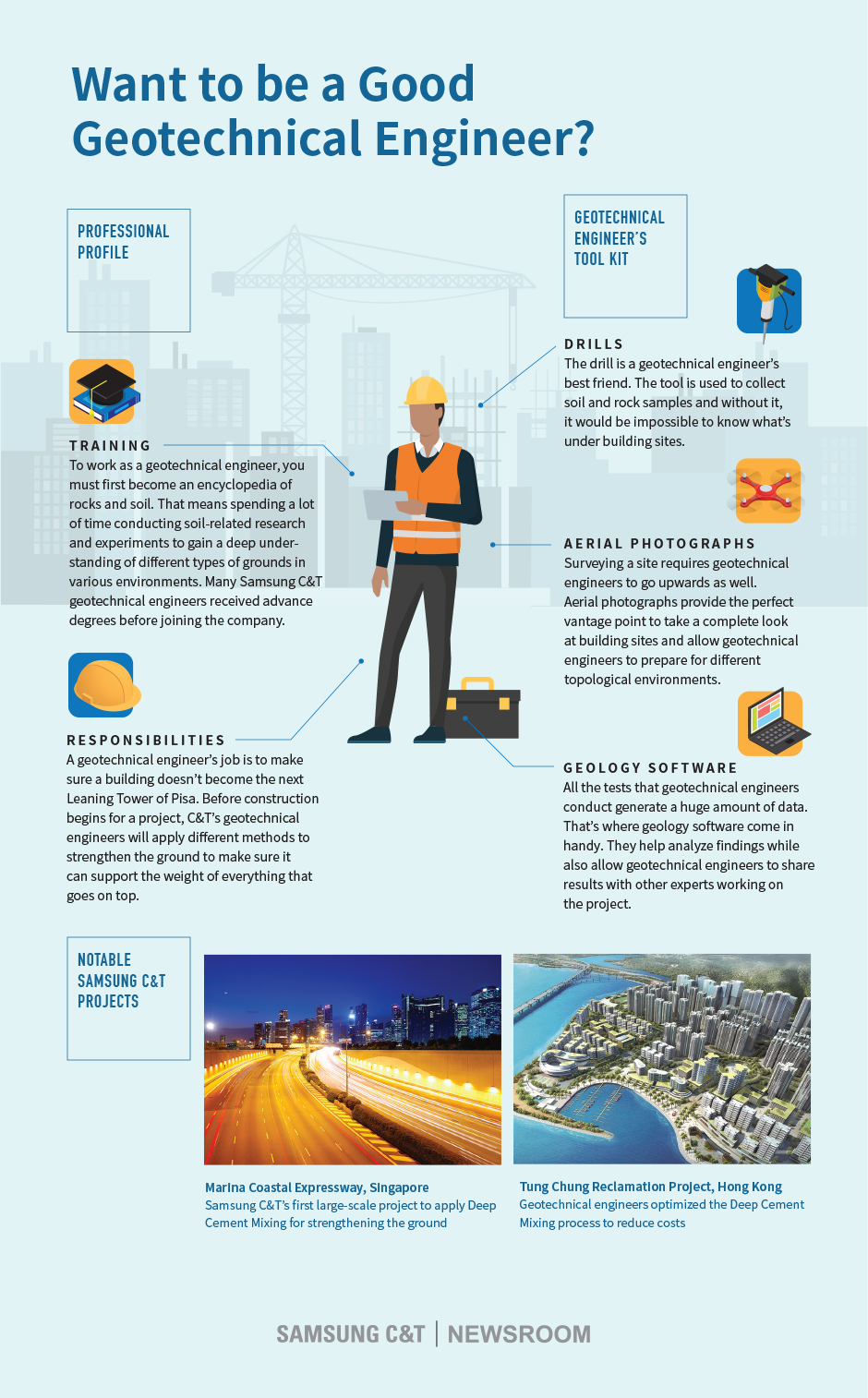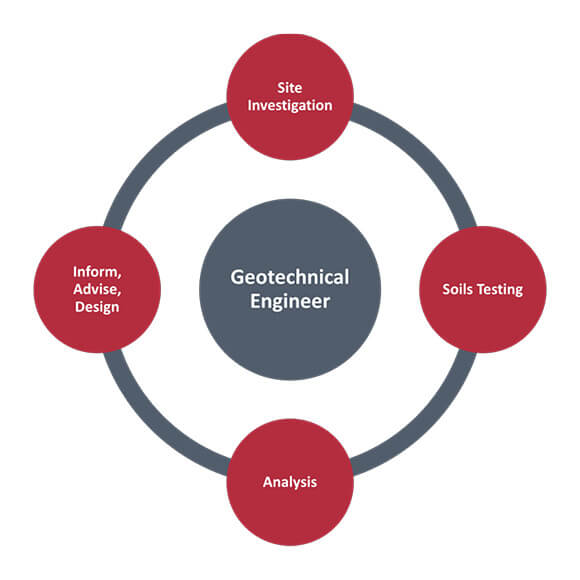The 7-Second Trick For Geotheta
Getting The Geotheta To Work
Table of ContentsGeotheta Things To Know Before You BuyWhat Does Geotheta Mean?Excitement About GeothetaGeotheta Things To Know Before You Get This
They collaborate with civil engineers, structural designers, designers, and various other specialists to incorporate geotechnical factors to consider into the overall task style and construction procedure. This calls for efficient synergy, sychronisation, and communication to ensure that the geotechnical elements line up with the task purposes and satisfy regulatory requirements.Mining & Materials Design: Principles of boring, penetration prices, and aspects affecting the selection of boring technique. Characteristics of dynamites, firing systems and blast patterns. Blasting methods in surface area and below ground functions. Unique blasting methods at excavation borders. Vibration and sound control. Mechanical and continuous approaches to fragmentation, including longwall shearing and fullface boring.
Modelling of piece and fragment size circulations; comminution as a transfer feature. Comminution technology: crushing, grinding, size classification. Integrated evaluation of fragmentation and comminution operations. Provided by: Mining & Materials Engineering.
Some Known Incorrect Statements About Geotheta
Bachelor's level programs in civil, geotechnical, geological, and environmental design typically last 4 years and consist of basic education courses in English, social scientific research, and the liberal arts, as well as programs in advanced mathematics, structural geology, and liquid mineralogy. (https://geotheta.godaddysites.com/f/why-geotechnical-engineers-are-your-projects-best-friends)
Geotechnical engineering entails the assessment of the soil and rock problems at a particular site, and their effects for the development of that website. As many structures rely upon the ground for assistance, it is without shock that a detailed understanding of the ground problems, and the suitability of foundation systems, are important to the lasting security and performance of the structure or framework.
Specialising in the investigation of geological developments and ground behavior, geotechnical designers execute scientific examinations and testing to understand the impact these geological developments may have on the layout and construction of structure, civil and infrastructure tasks. This expertise is crucial for the style and construction of structures, roads, tunnels, dams, bridges, and water and sewer system.
The geotechnical team at Douglas Allies consistently talk to designers, layout engineers, designers, and builders to make referrals on layout and development proposals to ensure that the built structures are accordingly developed for the ground problems. The layout of footing systems needs to consider the weight of the framework, the ability of the ground to support that weight with each other with movement tolerances and reliable building.
An Unbiased View of Geotheta
This task is substantially streamlined by the usage of our Douglas Map geospatial platform that makes this information readily easily accessible in a simple to use internet internet browser user interface. A geotechnical designer will certainly guide the exploration of boreholes and test pits to collect soil and other examples, and likewise assess surface area features and ground exposures to form a geotechnical model of the subsurface problems.
Depending on the job type and ground conditions ran into, laboratory testing may to name a few points evaluate stamina, compressibility, reactivity and/or permeability of dirt and rock samples. After this data is accumulated and collected, the results are made use of for a geotechnical model of the website, which is generally provided as sections throughout the website.

A geotechnical examination naturally can only evaluate the ground conditions at the locations pierced or excavated. All-natural variants in dirt and rock problems can happen across a site and in between test places. It is for that reason good method that the geotechnical engineer be maintained throughout building of the project to give on-site verification that the ground problems come across are regular with the expectations and suggestions offered in the geotechnical examination report.
What Does Geotheta Do?
Geotechnical engineers utilize their in-depth knowledge of dirt and rock to assess risk and address issues on diverse go to the website framework projectsGeotechnical design is a specialist branch of civil engineering which checks out the practices of planet products and the application of soil and rock auto mechanics. Geotechnical Engineers. As a geotechnical engineer, you will examine the physical, mechanical and chemical residential properties of dirt and rock in order to develop structures, maintaining structures and earthworks
Geotechnical engineering is closely linked to and overlaps with, both design geology and ground engineering - https://www.provenexpert.com/geotheta/. It's feasible to specialise in geotechnics or job for a geotechnical business however be known as a design geologist or a ground engineer. As a geotechnical designer, you'll require to: build and maintain connections with customers and various other experts included in the site, throughout each projectmaintain security criteria on website bear in mind expense implications when you make recommendationsstudy geological maps and airborne photographs from a series of resources and from different time periodsexamine construction plans to see exactly how possible they are based on your understanding of the siteinvestigate threats or geological hazards for the sitesearch for environmentally delicate functions, such as landfill begin to develop factual and expository ground modelsplan area investigationsdrill and analyse samples of bedrock, dirt, groundwater and additional products monitor other specialists on sitesolve technical problems as they develop, such as unforeseen frameworks at drill sitesmonitor problems during and after construction to see to it structures are secure in the brief and long termadding information collected on site to your first researchcreating geotechnical calculations, illustrations, and 2 or three-dimensional computer designs interpreting the datamaking suggestions about the proposed use the website
